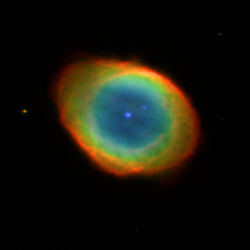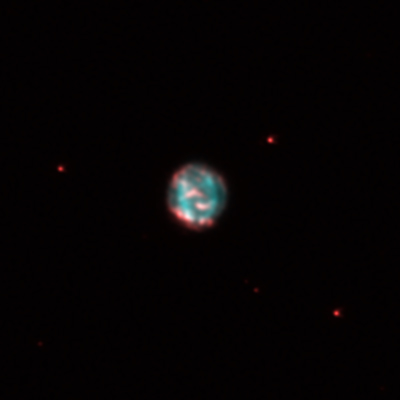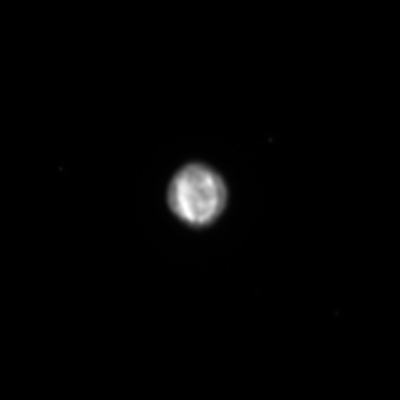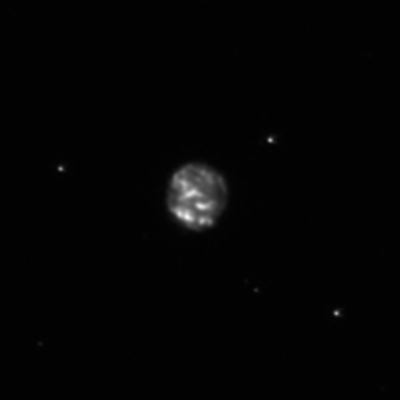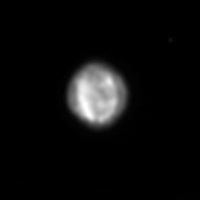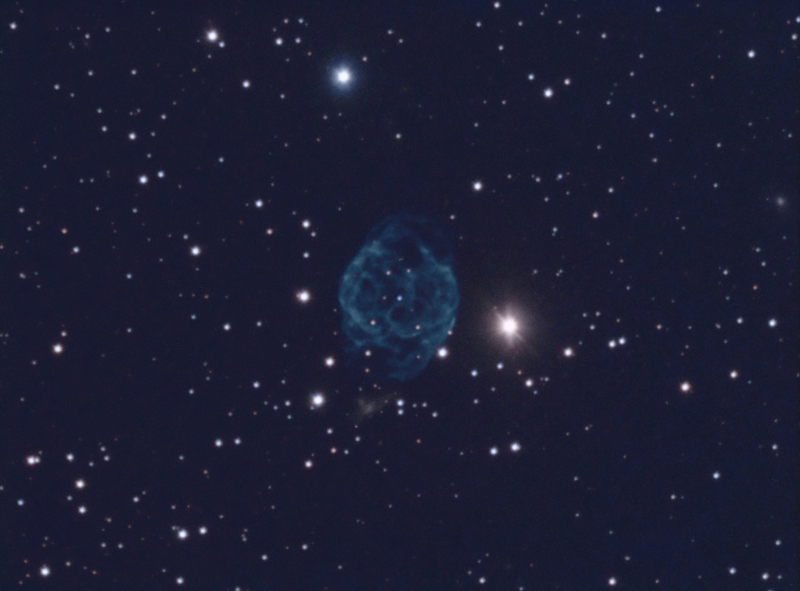Abell 34 "oozes faintness":
note the tiny background galaxy superimposed at the bottom edgeMost have more complex shapes. The reason for the unusual shapes is not well understood. Theories include interactions between the ejected gas layers, magnetic fields, planetary systems, and binary stars.
Minkowski's Butterfly is thought to have a binary star orbiting
the white dwarf causing the central constriction with jets above
and below:
Here are a few classic bright-round-things-about-the-size-of-a-planet:
 |
| Cat Eye |
Often there are faint outer layers evident on longer exposure reflecting multiple episodes of the central star shedding outer layers:
 |
| Cat eye |
 |
| Blinking Planetary |
Many are bipolar structures with a ring-like central constriction. M 76 and M 57 are an example of two sides of the same coin.
 |
| M 76 the little dumbbell left M 57 the ring nebula right side view of a ring face on view of a ring |
M57 (right) shows a bright ring with a very faint outer shell.
Rotate that 90 degrees and you've got M76 (left) with the side view of the bright central ring appearing as a rectangle and the faint outer ring revealed as expansions blowing out on either side of the ring.
Some have pairs of jets, ejecting material, typified by the saturn nebula:
 |
| Saturn Nebula |
The jets are classically called ansae (wings), either way they are flying things.
Some of the jets have low energy NII regions at the tip aptly known by the acronym FLIERS (Fast Low-Ionization Emission Regions) which are more evident when a red NII filter is used:
Some of the jets have low energy NII regions at the tip aptly known by the acronym FLIERS (Fast Low-Ionization Emission Regions) which are more evident when a red NII filter is used:
 |
| Saturn Nebula red NII FLIERS |
 |
| Blinking Planetary red NII FLIERS |
 |
| IC2149, the Easter Egg Nebula |
 |
| IC 4593 White-Eyed-Pea |
-small bright planetary
-faint outer core
-bipolar jets
-red NII FLIERs
-BONUS: the outer core is deformed by interaction with interstellar medium generating a bow wave upper right
More planetary nebula images here
A more scientific account of the modern concepts in planetary
nebulae morphology:
Shape, structure, and morphology in planetary nebulae
Richard A. Shaw
http://journals.cambridge.org/article_S1743921312010873






